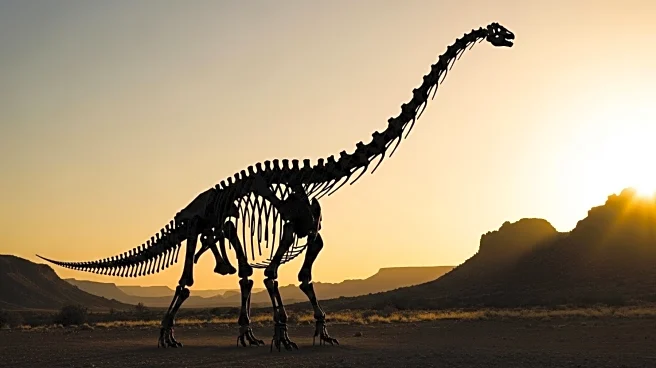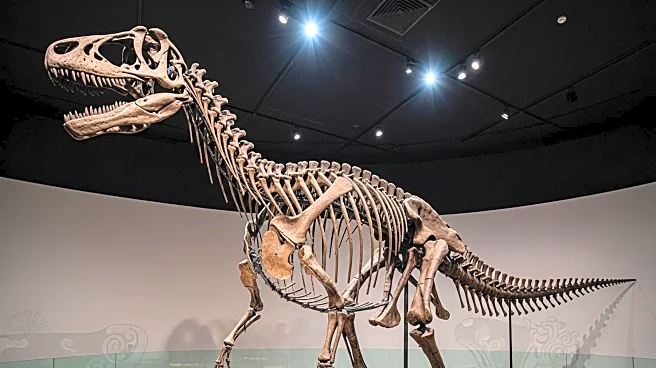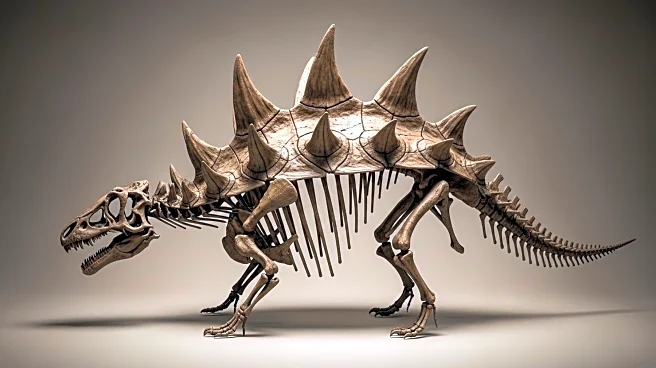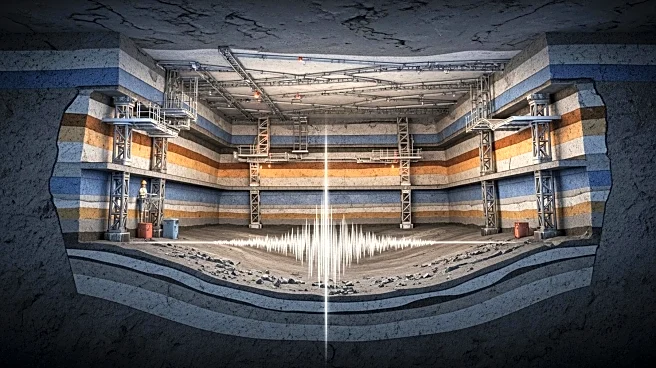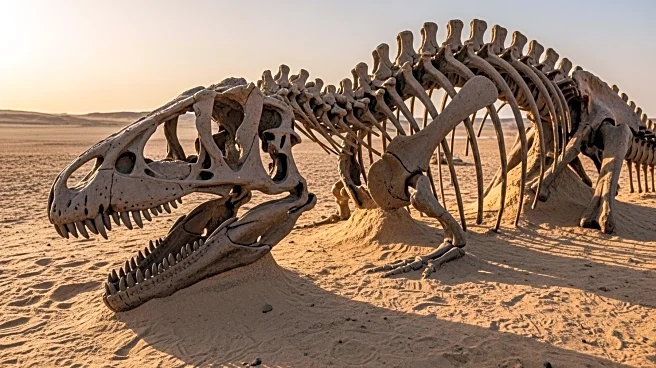What is the story about?
What's Happening?
Paleontologists have uncovered a new species of dinosaur, Huashanosaurus qini, in the Guangxi region of China. This plant-eating dinosaur, measuring 39 feet long, is part of a new genus and species of early eusauropod from the Jurassic period. The discovery was made in the Shiwandashan Basin of the Wangmen Formation, a geological rock unit containing fossils from the Jurassic period. The partial skeleton includes vertebrae, ribs, humerus, ulna, fibula, and foot bones. The dinosaur likely lived in forested river and lakeside environments, which were prevalent in the region at the time. Phylogenetic analysis suggests that H. qini is the oldest sauropod in South China, dating back to the early to middle Jurassic, between 200 million to 162 million years ago, predating previously known sauropod fossils from the region by about 30 million years.
Why It's Important?
The discovery of Huashanosaurus qini provides significant insights into the diversity and evolution of Jurassic-era eusauropods in China. It highlights the complexity of ecosystems during the Jurassic period, as evidenced by the presence of bony fish scales and plesiosaurian teeth found at the site. This finding contributes to the understanding of sauropod evolution and their adaptation to different environments. The research underscores the importance of paleontological studies in uncovering the history of life on Earth and can influence future research directions in the field.
What's Next?
The discovery may lead to further paleontological expeditions in the region to uncover more fossils and gain a deeper understanding of the Jurassic ecosystem. Researchers may also conduct additional studies to explore the evolutionary traits of Huashanosaurus qini and its relationship with other sauropods. This could potentially lead to new insights into the adaptation mechanisms of dinosaurs during the Jurassic period.
Beyond the Headlines
The discovery of Huashanosaurus qini not only enriches the scientific understanding of dinosaur evolution but also highlights the importance of international collaboration in paleontology. The research team included scientists from various institutions, emphasizing the role of cooperative efforts in advancing scientific knowledge. Additionally, the findings may inspire educational initiatives and public interest in paleontology, promoting awareness of Earth's prehistoric life.
AI Generated Content
Do you find this article useful?
